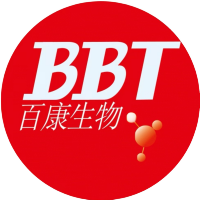Innovations in flax fibre treatment technologies contribute to increasing the demand for Egyptian falx in 2025
Innovations in flax fibre treatment technologies contribute to increasing the demand for Egyptian falx in 2025
By Baico Biotech丨Bio-degumming enzyme丨LCB-HK-01
The global flax market has experienced significant upheaval in 2024, characterized by sharp price fluctuations and shifting dynamics between supply and demand. From a shortage of raw materials at the start of the year to a record harvest in Europe and Egypt by autumn, the market has seen a true "roller coaster" ride. As China’s leading fiber primary processing company, LCB (HK) explores the market’s key drivers and offers perspectives on how to navigate the challenges and opportunities ahead in 2025.
Key Factors Driving Market Instability
Mismatch Between Supply and Demand
The autumn of 2024 saw a bumper flax harvest across Europe, particularly in France and Belgium, where scutching operations pushed international inventories to an all-time high. However, downstream demand in the flax textile market failed to keep pace. Manufacturers struggled to absorb the surplus production, leading traders to offload stocks at steep discounts.
This oversupply had ripple effects throughout the supply chain. For instance, in the Yangtze River Delta Textile Industrial Zone in China, a key production hub, many flax yarn spinning mills advanced their annual shutdowns by two months due to a lack of orders. This rare phenomenon underscores how a short-term imbalance between supply and demand can destabilize prices.
Impact of Weather and Geopolitics
Flax production is highly sensitive to environmental and geopolitical factors. The weather in major flax-producing regions, such as the temperate maritime climate of Normandy, France, and the subtropical Mediterranean climate of Tanta, Egypt, directly impacts retting processes, irrigation, and yields. For example, unfavorable weather in Europe during 2023 significantly disrupted production, contributing to the market’s earlier shortages.
Geopolitical tensions, such as the ongoing Russia-Ukraine conflict, have further strained the supply chain. Eastern Europe, once a significant flax-producing region, saw its contribution to global supply decline sharply, resulting in increased reliance on alternative producers like Egypt. When the conflict eventually resolves, a potential resurgence in Eastern European production may cause further fluctuations in global flax prices.
Advances in Technology and Quality
Technological innovation will play a crucial role in stabilizing and shaping the flax market. LCB (HK)’s research shows that Egyptian flax, often perceived as less suitable for high-count yarn spinning compared to European flax, can achieve comparable quality with proper pre-treatment. Using the DG-7 flax treatment solution developed by LCB (HK), Egyptian flax can reach fineness levels of 24N-28N, elevating its market value to approximately $8 per kilogram.
This demonstrates that the perceived shortcomings of Egyptian flax lie not in the fibers themselves but in quality control and branding practices. For long-term growth, Egyptian traders must focus on improving their product positioning and adopting better quality management systems.
Outlook for the Flax Market in 2025
Signs of Recovery
Early 2025 has brought encouraging news: major buyers from India and China have placed substantial orders in European flax-producing regions, with some single orders exceeding 100 containers. This surge in purchasing activity bodes well for the recovery of the European flax market. Given the interconnected nature of global pricing, a rebound in European flax prices will likely benefit Egyptian flax producers as well.
Challenges and Opportunities
Despite these positive developments, the market faces significant headwinds. The oversupply from 2024 will take time to digest, even with normal planting and harvesting conditions in Europe and Africa. It is estimated that at least one year will be required for the textile industry to gradually stabilize inventories.
During this period, Egyptian flax prices are expected to recover steadily, returning to early 2023 levels. Unlike the explosive price swings of 2023-2024, this recovery will likely be gradual and driven by consistent demand growth in the downstream textile market.
Conclusion: Toward a Stable and Sustainable Future
The flax market’s journey through 2024 highlights the delicate balance between supply, demand, and external factors. While the challenges of oversupply and geopolitical disruptions persist, advancements in technology and strategic planning offer a pathway to greater market stability.
As the global market evolves, LCB (HK) remains optimistic about the future of flax, particularly for Egyptian producers who embrace innovation and quality improvements. With steady demand growth and a focus on long-term development, the flax industry is well-positioned to achieve sustainable success in the coming years.
